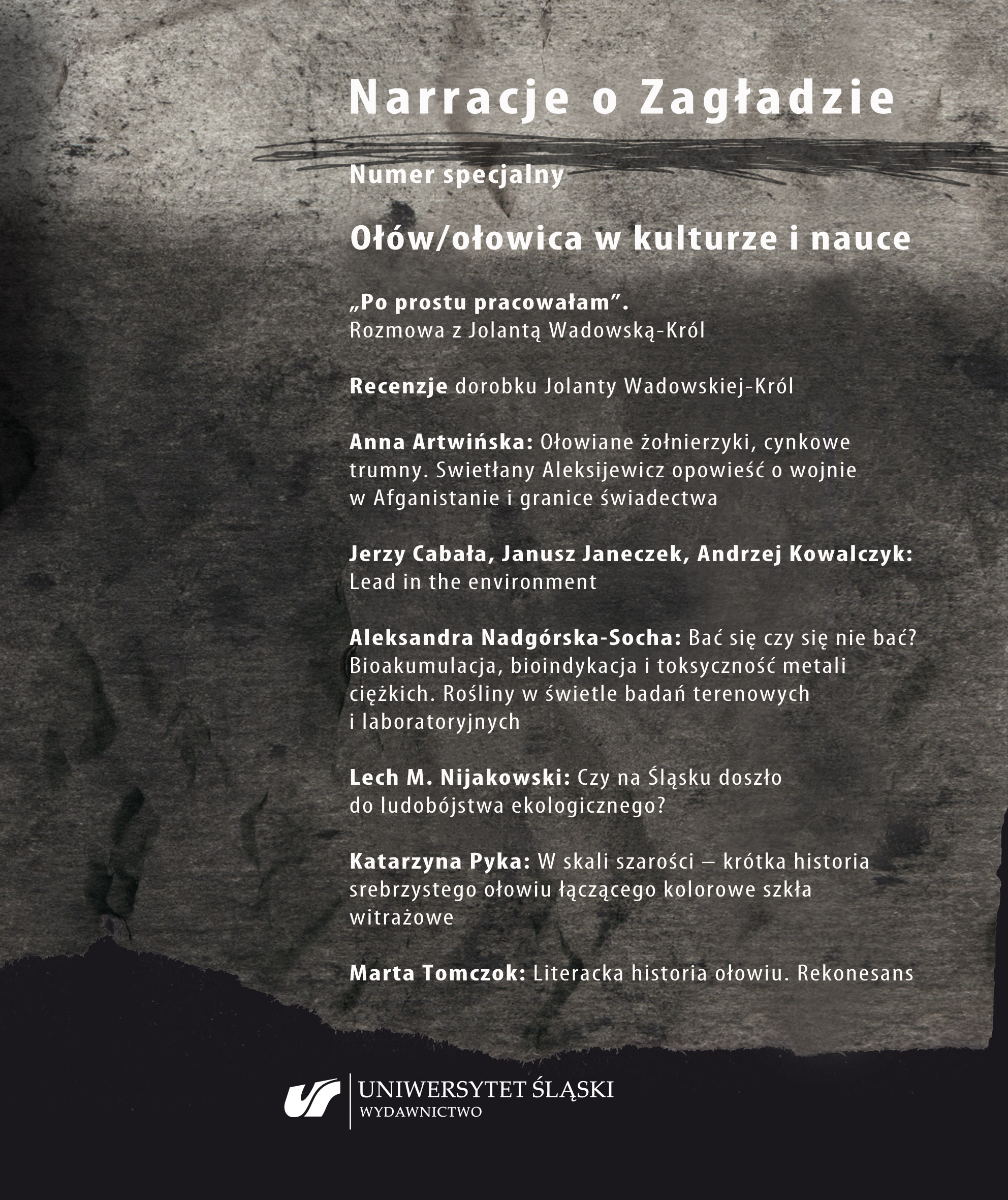Ołów w środowisku
Lead in the environment
Author(s): Jerzy Cabała, Janusz Janeczek, Andrzej KowalczykSubject(s): Language and Literature Studies
Published by: Wydawnictwo Uniwersytetu Śląskiego
Keywords: lead geochemistry; lead minerals; use of lead; Pb concentrations in soils; waters and air; historical lead pollution; Pb smelting in the Silesia–Krakow region
Summary/Abstract: The publication describes issues related to the natural occurrence of lead in the environment and its secondary, anthropogenic concentrations in soil, water and atmospheric dust. The changing directions of the use of lead in the last several thousand years are presented. It is pointed out that relatively low temperature of metallurgical production and favourable properties fostered a large-scale use of lead, one of the seven earliest known metals. The article indicates that one reason for the rapidly increasing lead mining was the extraction of silver from the galena ores. The lead geochemistry and mineralogy are then discussed in terms of the concentration and forms of this element in various lithospheric environments. The strong tendency to bind with sulphur causes it to be the most common in a Pb sulphide, galena. In the oxidation stage, a Pb carbonate, cerussite or Pb sulphate, anglesite are formed, and much less frequently ions of other elements, e.g. P, As, Mo, V, Cr, form lead phosphates, arsenates, molybdates, vanadates and chromates. The geology and mineralogy of the Silesian-Cracowian Zn-Pb ore deposits are characterised. A relatively low geochemical activity of lead Pb2+ ions makes a transfer of lead to the living organisms limited in the natural conditions, although it increases dramatically for synthetic minerals or lead compounds. been associated with rapidly increasing zinc production since the 19th century, so one significant source of lead emissions is zinc smelters. The significant role of the Silesia–Cracow region for the global production of lead, zinc and cadmium in the nineteenth and early twentieth century is stressed. The volume of lead production in the world and Poland is presented. In terms of various uses of lead (car batteries, alloys, dyes, the addition of Pb tetraethyl to petrol, along with others), the most important sources of emissions of lead and its compound to the soil, water, and atmosphere are indicated. Sources and volumes of Pb emissions in Europe over the period 1955–2010 are summarised. More detailed information related to lead emissions to the environment refers to the Silesia– Cracow area. Numerous smelters had produced lead, zinc, and alloys of non-ferrous metals for 200 years and associated with the local and regional contamination of the environment with heavy metals. Lead has powerful toxic effects on living organisms, especially its synthetic forms emitted by smelters and factories using this metal. Periods of the greatest prosperity of the Silesian lead, zinc and cadmium smelting were associated with the increase in employment, economic progress and enormous profits for their owners. On the other hand, they contributed to the catastrophic contamination of the environment and difficult to estimate the scale of illness in children and adults due to lead poisoning.
Journal: Narracje o Zagładzie
- Issue Year: 2021
- Issue No: special
- Page Range: 147-224
- Page Count: 78
- Language: Polish

